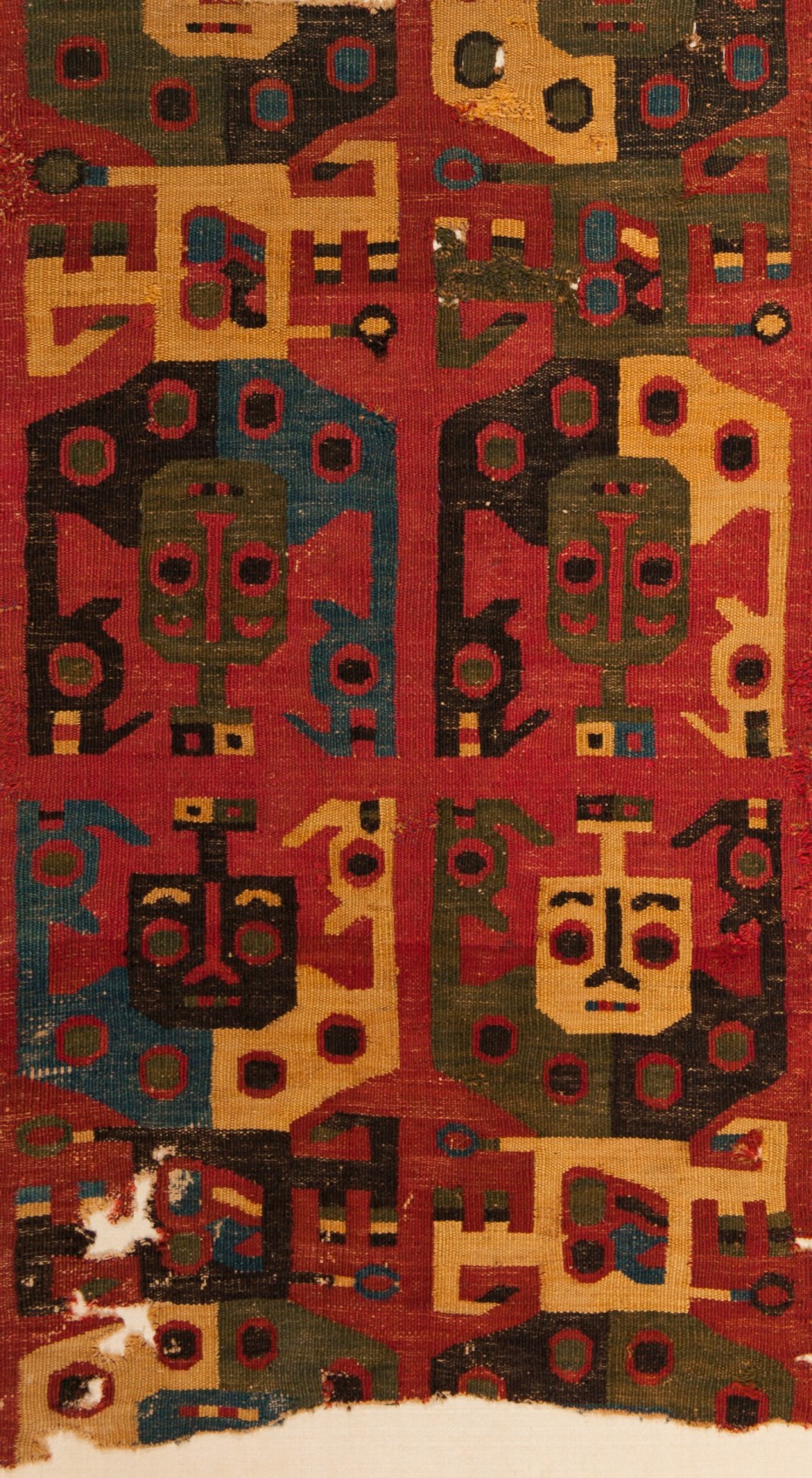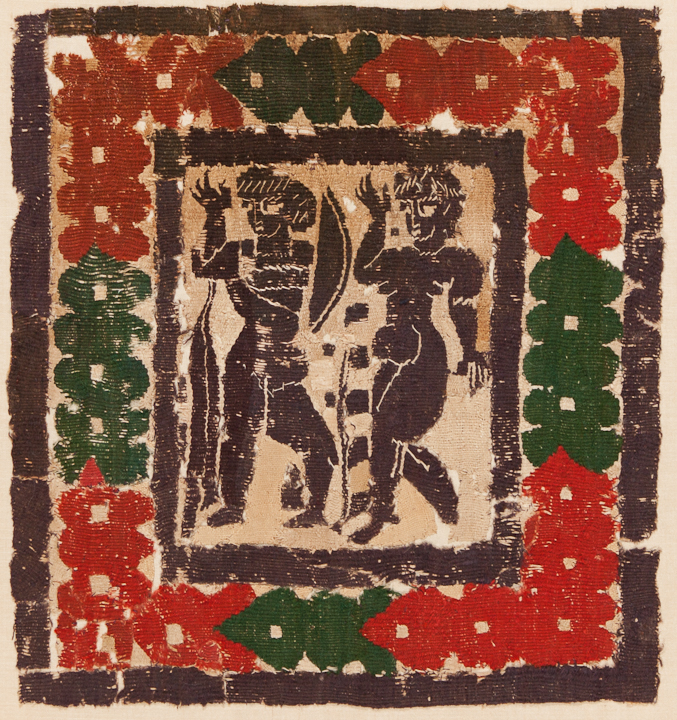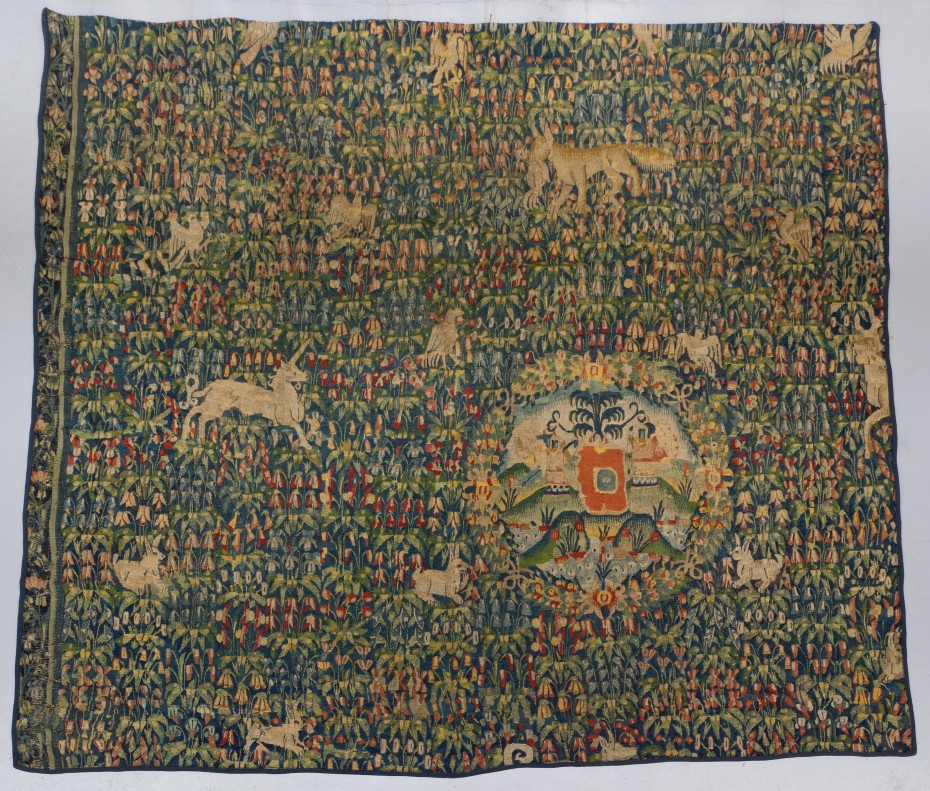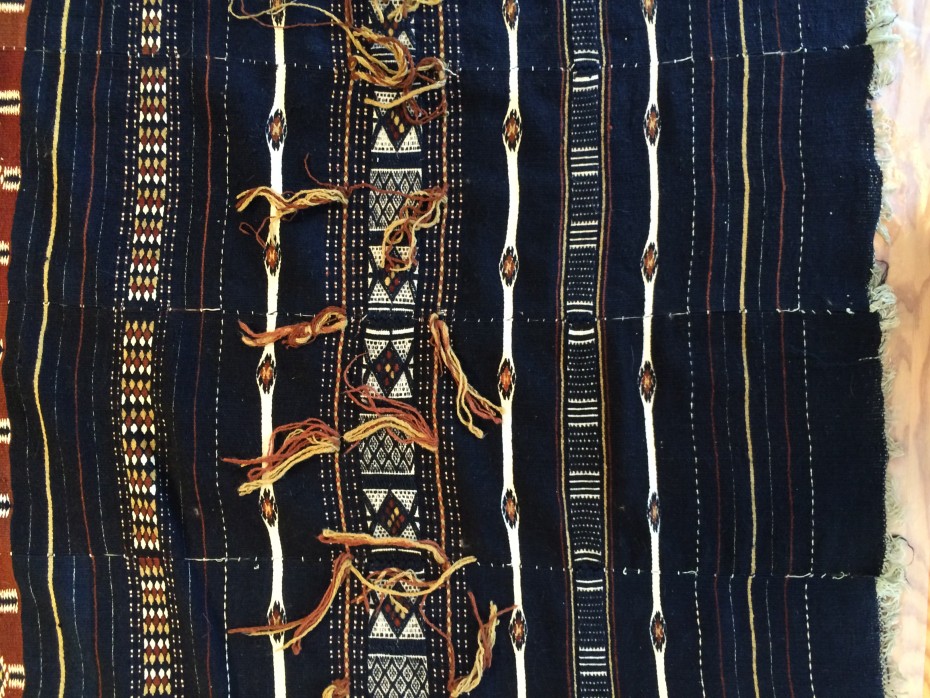TAPESTRY
Ancient humans began weaving by making baskets and mats with reeds gathered from riverbeds. They later spun flax, wool, and cotton into long, continuous fibers, enabling them to weave blankets and garments. Increasingly complex techniques, including tapestry, resulted in cloth that was both decorative and functional. Tapestry weaving uses many different colors of yarn to create complex designs. Used throughout history and across cultures, tapestry reflects the traditions of the cultures in which it is produced. This small sample displays the vastly different products achieved with tapestry weaving.
The key idea behind tapestry weaving is the use of multiple, multi-colored weft threads that run discontinuously over a set number of warp threads. Warp threads run vertically on a loom, while the weft threads travel horizontally across them. It is the use of multiple weft threads that enables the weaver to create complex designs, since they are not bound to using one color that runs across the entirety of the warp. Only the weft threads are seen in the final product. A uniform color, the warp is not seen at all.
The oldest extant examples of tapestry weaving were preserved in the arid tombs of the prehistoric Andean people and the Coptic Egyptians. Located in the Andes Mountains, Tiwanaku artisans honed their skills as sophisticated tapestry weavers from 400-1000 C.E. They spun and dyed fibers from alpacas, llamas, and vicuñas (a wild ancestor to the domesticated alpaca) to create vibrant garments that served as tunics in life and burial garments in death. The Strip of Tapestry with Designs of Masks showcases expertise in spinning, dying, and tapestry weaving. The vivid colors animate the abstract characters that are meticulously woven into this cloth.

Bolivia, Tiwanaku, Strip of Tapestry with Designs of Masks, ca. 600-900 CE
Simultaneously, Coptic tapestry was flourishing as Roman Christians reigned over Egypt 1st to 12th century. When mummification was outlawed at the end of the fourth century, the implementation of Christian funerary practices lent new importance to funerary garments. It became customary to be buried with tapestry woven cloth. The iconography displayed on these tapestries depicts the change that was coursing through Egypt. In Tapestry Panel with Two Nude Figures (5th c.), the figures may be rooted in Roman mythology or they may represent Adam and Eve in the Garden of Eden. Depicting a confluence of cultures, Coptic tapestry weaving uniquely mirrors a specific cultural moment.

Egypt, Coptic, Tapestry Panel with Two Nude Figures, 5th c.
Practiced throughout the Middle Ages, tapestry reached its height in Europe in the Renaissance, when both France and Belgium hosted significant weaving centers. Characterized by their enormity, intricacy, and decorative nature, western European tapestries first decorated church walls, but soon moved into the chambers of nobles in order to reduce drafts and liven up the castle walls. The Flemish Millefleurs Tapestry from the 16th century displays a number of flora and fauna, including a unicorn. Mythical and magical beasts, unicorns symbolized Christ in western European tapestries, which often displayed images of myth, allegory, and Christian virtue.

Flemish, Millefleurs Tapestry, 16th c.
Other tapestry weaving created abstract designs. Weavers from the West African Fulani culture used tapestry weaving in their massive tent-like furnishing textiles, arkillas, for both nomadic and sedentary homes. Young noble Fulani received an arkilla kerka as wedding gifts from their parents. It symbolized prosperity and familial love and, on a practical note, it served as a tent divider and a mosquito net. The Mead’s arkilla consists of seven sections that were woven separately and then sewn together to create the final product. Although it includes plain weave sections, almost all the patterning in the piece is tapestry woven. In some instances, it may have taken the weaver up to half a day to finish a single motif. The arkilla kerkas of the Fulani are a true testament to the precise execution of tapestry weaving.

Mali, Fulani, Tent divider (Arkilla kerka), ca. 1900-1950
From this small sampling of tapestries, it is clear that tapestry weaving is not specific to any culture or point in history. Instead, it has sprung up, in some cases independently, throughout the globe since the advent of weaving. There are many variations in themes, styles, and methodologies in each tapestry weaving tradition. Each tradition is represented by a weft thread that travels over a continuous warp, weaving a tapestry that connects the vast number of cultures all over the world.
